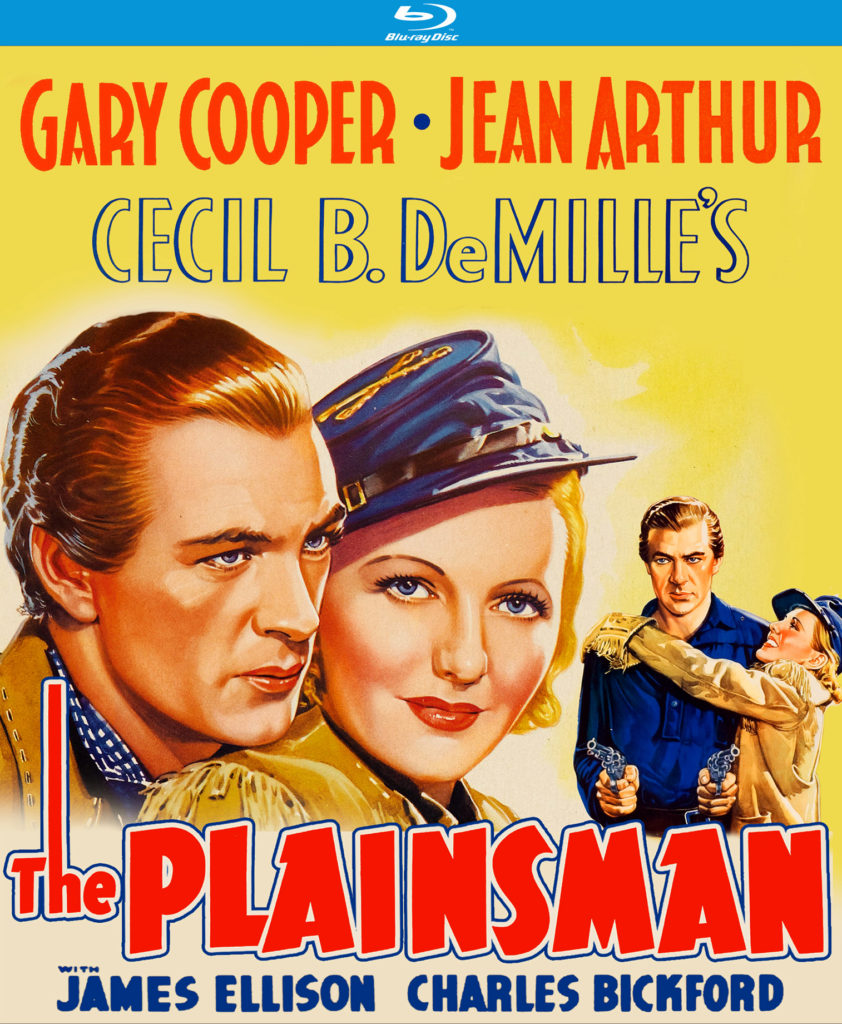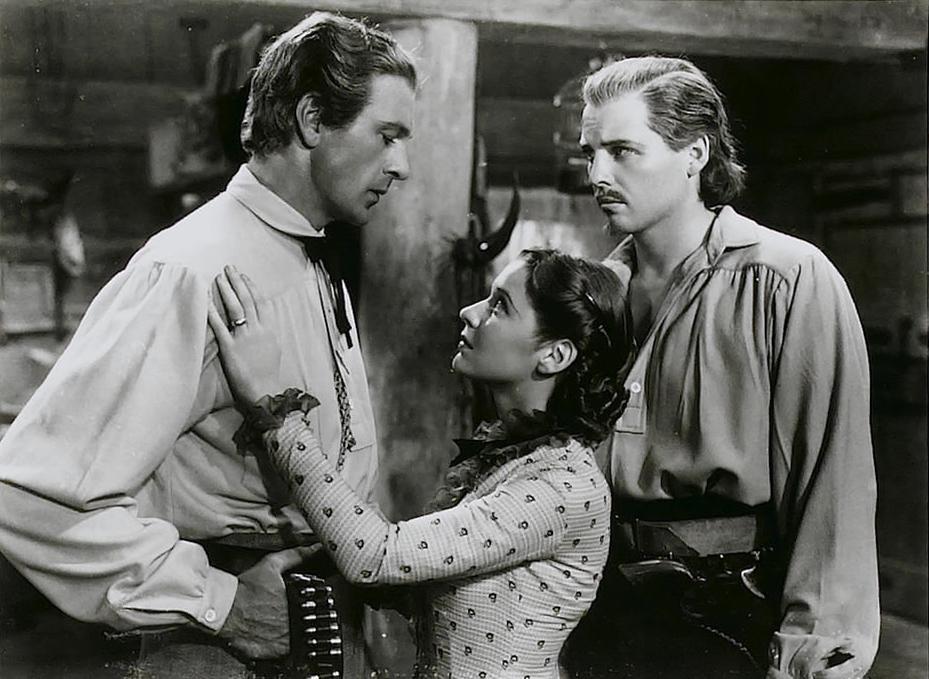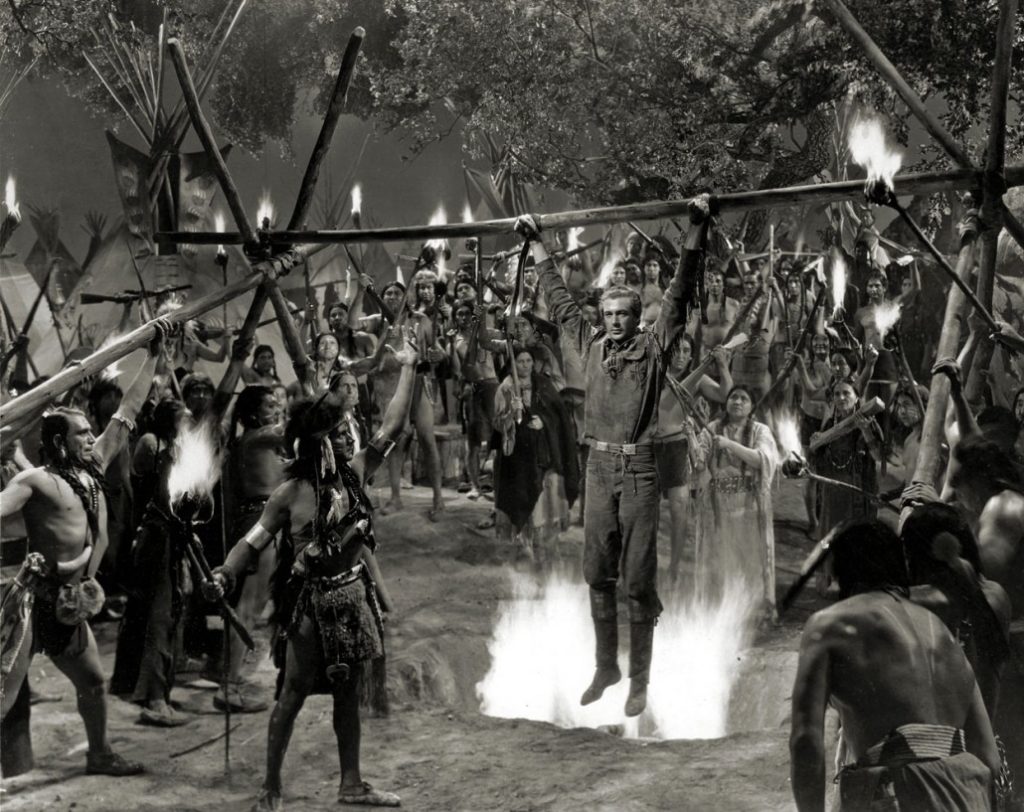Wild Bill, Calamity Jane, and Buffalo Bill Tame the Frontier in DeMille’s Epic Western
DIRECTED BY CECIL B. DEMILLE / 1936
BLU-RAY STREET DATE JUNE 29, 2021 / KINO LORBER STUDIO CLASSICS

As a record of historical events, The Plainsman is a load of pure hokum. The names of its principals might be familiar to you: Wild Bill Hickock, Calamity Jane, Buffalo Bill, General Custer, but the story the movie purports to tell – how these legendary figures tamed the west – has little to nothing to do with the actual events. To be fair, movies are not history lessons and this one in particular tells you upfront that facts and accuracy were sacrificed on the altar of good drama. And if there’s one thing director Cecil B. DeMille knows, it’s how to wring good drama out of out of his source material, especially if that source material comes from stories out of myth and legend.
DeMille was a prolific director, helming over 80 movies in a career that stretched from 1914 to 1958. Though best known for his biblical epics, particularly both versions of The Ten Commandments (1923 & 1956), Samson and Delilah (1949), and King of Kings (1927), DeMille worked in a wide variety of genres – including quite a few westerns like The Plainsman. He approaches the story of Wild Bill Hickock with the same reverence as he does the figures in his Bible movies. Even the opening titles crawl upwards and off into infinity (Star Wars style), suggesting that the story we’re about to bear witness to has an epic scope.
Hickock is portrayed by Gary Cooper, not the sort of actor you’d pick to play someone who’s nickname is ‘Wild.’ Cooper plays him as a man of quiet yet firm integrity, which is the role Cooper falls most easily into. An opening prologue is a scene where President Lincoln informs his cabinet that, now that the Civil War has ended, the West must be tamed and civilized. The scene ends when his wife informs them that they’re running late for the play they are to attend. Following Lincoln’s assassination, Hickock takes his command to heart and sets out to do that very thing. The way Cooper plays it, the words could’ve come from a burning bush.

But let’s not think that The Plainsman’s tone is all serious and stern. There’s plenty of life in the film. This is especially true where Calamity Jane is concerned. Played by Jean Arthur as a fast-talking, wise-cracking dame who’s as deft with her whip as she is with her makeup, Jane is a bundle of energy, enlivening the film whenever she shows up. Arthur was catapulted to stardom (after a career that stretched back to the early 1920s) when she was cast in Frank Capra’s Mr. Deeds Goes to Town (also with Cooper). She plays a tough-talking newspaper woman in Deeds, and she brings that same energy to her role here. She berates Hickock, calling him a “slap-sided, bird totin’ rat!” when she suspects he’s with another woman (whom Jane refers to as a “chipmunk” and a “honky-tonk mopsy.”)
Now it’s probably best to get this out of the way: the film’s racial and gender politics are regressive. The Native Americans are all played by White actors (and in one instance, a young Anthony Quinn!). There’s some attempt at making the Native Americans sympathetic: they’re fighting back against what they see as the theft of their land amid numerous broken promises. Ultimately, however, they’re the villains of the film, and the cause of settling on their lands is seen as not only just, but a divine right. When they fight back against the encroaching White man, that’s an affront that cannot go unpunished.

Having said that, DeMille directs the heck out of the major set pieces that comprise the middle of the film. He’s always been good at controlling large numbers of extras in his crowd scenes (think of his ‘Cast of Thousands’ in 1956’s The Ten Commandments), and The Plainsman is no exception. Hickock and Jane are captured by the Cheyenne chief Yellow Hand. He threatens Hickock with torture and death unless one of them will reveal the location of an Army scout train heading to resupply a nearby fort. Hickock refuses and is strung up over a burning pit while the gathered Native tribe dances around him. Jane relents and discloses the information. The Cheyenne locate the train and attack, leading to an extended sequence where a small band (which includes Buffalo Bill Cody) must hold off hordes of angry attackers, who are armed with new, repeating rifles. The initial attack becomes a siege, with the Army survivors holed up on a small island, while the Cheyenne pick them off one by one over the course of six or seven days. The siege takes a mental toll on many of the trapped men, who begin to despair that help in the form of reinforcements sent by General Custer will never arrive.
Like all good Westerns (and plenty of bad ones too), there are shootouts, bar fights, and charging calvaries. In addition, the film layers on plenty of major historical events, such as Lincoln’s assassination and Custer’s last stand, to give The Plainsman a sense of epic historical sweep. Even though such events in real life took place over a decade apart, here they seem to occur within a matter of weeks. But like I said, the film apologizes for its liberties upfront.
Kino Lorber’s new Blu-Ray of The Plainsman comes with a feature-length audio commentary by film critic and author Simon Abrams. It also has the theatrical trailer, along with a collection of trailers for related titles.

